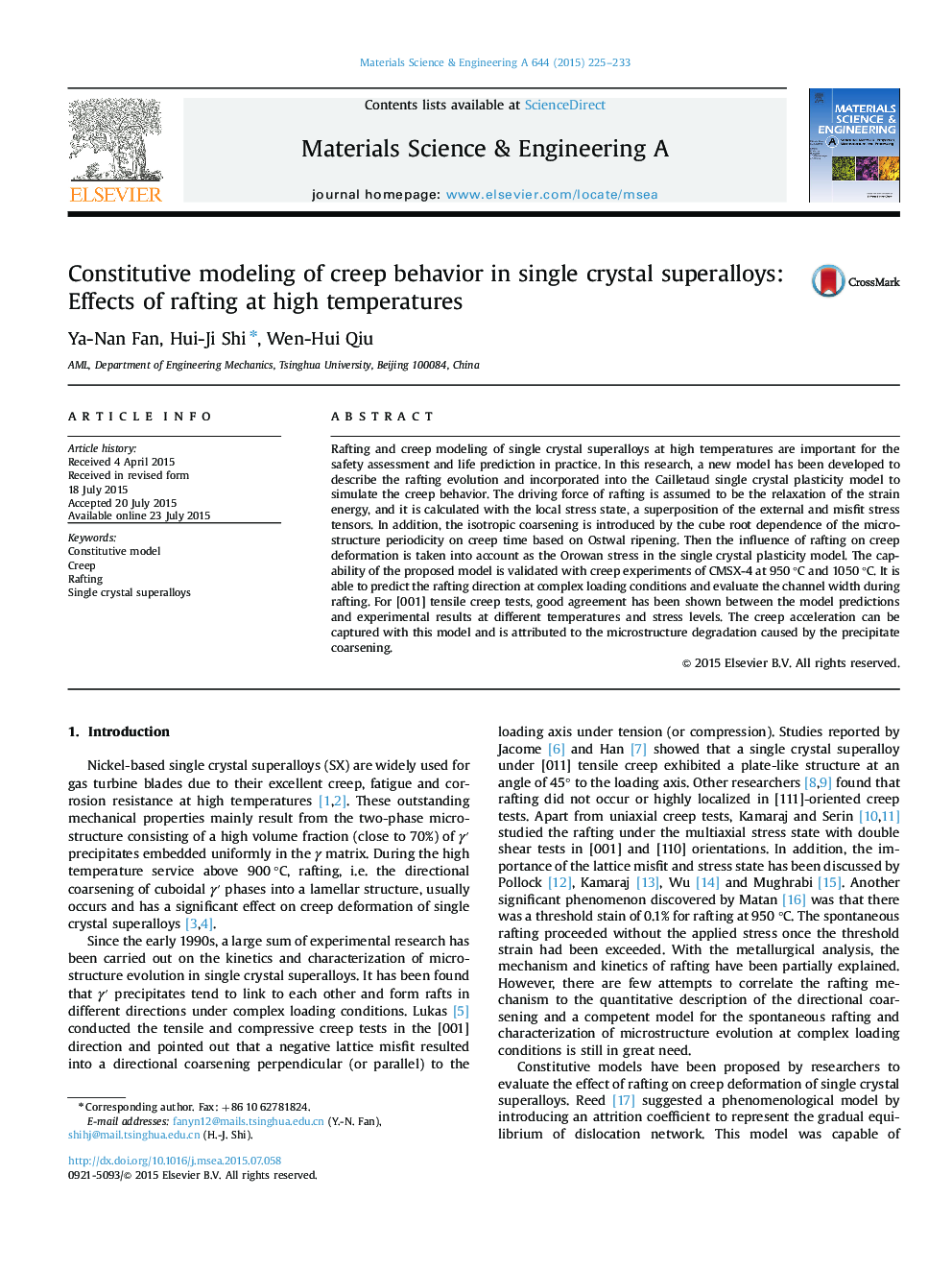| Article ID | Journal | Published Year | Pages | File Type |
|---|---|---|---|---|
| 1574086 | Materials Science and Engineering: A | 2015 | 9 Pages |
Abstract
Rafting and creep modeling of single crystal superalloys at high temperatures are important for the safety assessment and life prediction in practice. In this research, a new model has been developed to describe the rafting evolution and incorporated into the Cailletaud single crystal plasticity model to simulate the creep behavior. The driving force of rafting is assumed to be the relaxation of the strain energy, and it is calculated with the local stress state, a superposition of the external and misfit stress tensors. In addition, the isotropic coarsening is introduced by the cube root dependence of the microstructure periodicity on creep time based on Ostwal ripening. Then the influence of rafting on creep deformation is taken into account as the Orowan stress in the single crystal plasticity model. The capability of the proposed model is validated with creep experiments of CMSX-4 at 950 °C and 1050 °C. It is able to predict the rafting direction at complex loading conditions and evaluate the channel width during rafting. For [001] tensile creep tests, good agreement has been shown between the model predictions and experimental results at different temperatures and stress levels. The creep acceleration can be captured with this model and is attributed to the microstructure degradation caused by the precipitate coarsening.
Related Topics
Physical Sciences and Engineering
Materials Science
Materials Science (General)
Authors
Ya-Nan Fan, Hui-Ji Shi, Wen-Hui Qiu,
